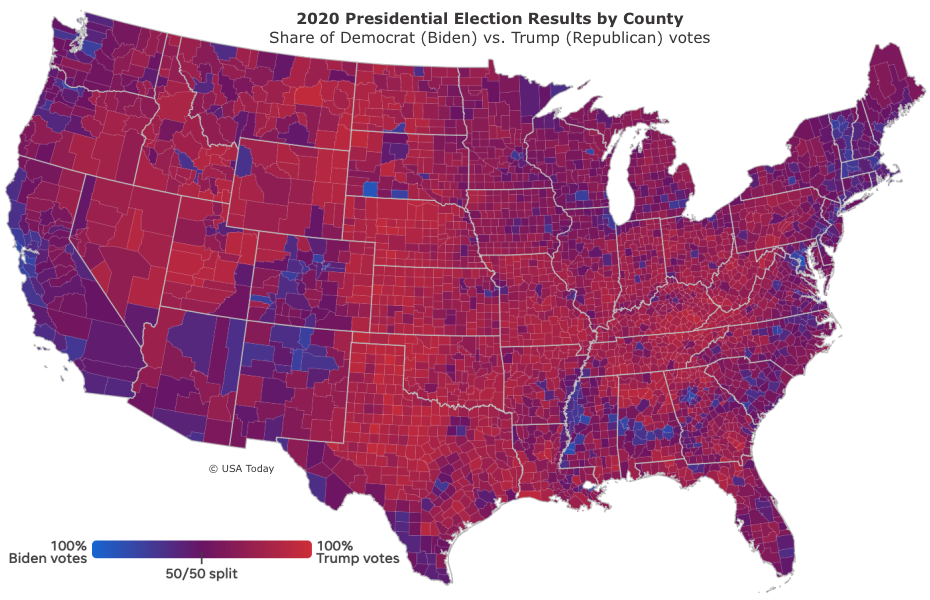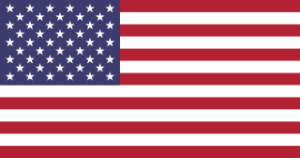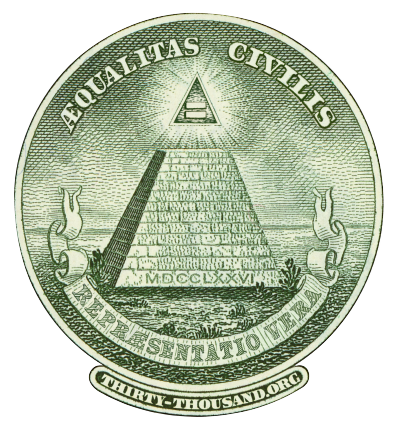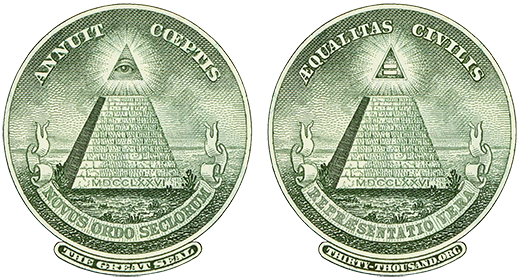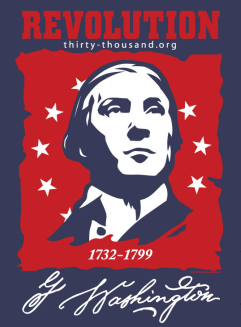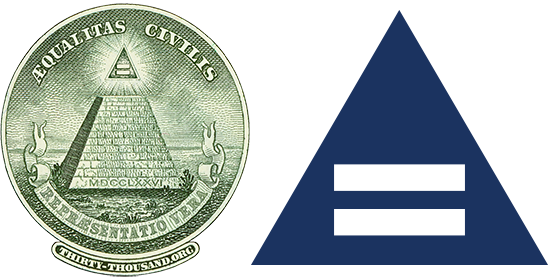Small districts will allow independent and third-party candidates to be elected.
Despite the great diversity of the American people, every Representative in our “People’s House” is either a Democrat or a Republican.
Despite the great diversity of the American people, every Representative in our “People’s House” is either a Democrat or a Republican.
Smaller congressional districts will lead to much greater diversity within the two parties. It will also enable independent and third-party candidates to win House elections, thereby breaking the two-party monopoly over political power.
End the Political Duopoly of Congress
George Washington’s 1796 “Farewell Address” included a prescient warning about the “baneful effects” of political parties in which he observed that the parties “serve to Organize faction, to give it an artificial and extraordinary force — to put in the place of the delegated will of the Nation, the will of a party [who are] often a small but artful and enterprising minority of the Community.”1George Washington’s Farewell Address, September 19, 1796. That is, he warns us, the political parties will put their own interests above the “will of the Nation”.
Washington’s warning about the parties organizing “faction” refers to the fact that they will foment discord2The definition of “faction” then included “tumult, discord, dissension” (according to the 1828 Websters Dictionary). to advance their own interests. In fact, Madison defined faction as “a number of citizens, whether amounting to a majority or a minority of the whole, who are united and actuated by some common impulse of passion, or of interest, adversed to the rights of other citizens, or to the permanent and aggregate interests of the community.”3Federalist 10.
Sadly, we have been witnessing the full realization of Washington’s apprehensions: Partisan antagonism manifesting largely from manufactured outrage intended to replace dialogue with polarization, fueled by the need to raise vast sums of money to fund spectacularly expensive political campaigns in massive electoral districts.
Unfortunately, it is virtually impossible for a candidate to win an election to the U.S. House unless he or she is a member of one of the two dominant political parties. In many states, the primary barriers to entry for third-party and independent candidates are state-imposed ballot access regulations which are intended to preserve two-party dominance4For more information about this ballot access regulations, visit Ballotpedia.org’s page on Ballot access for major and minor party candidates. (an important subject which is outside the scope of this article). However, in those states that have few or no ballot access regulations, the massively oversized congressional districts are the primary impediment for either third-party or independent candidates. There are two reasons for this. First, the high cost of congressional campaigns in massive electoral districts necessitates financial and advisory support from one political party or the other. Second, the party’s brand provides an essential endorsement for candidates who are unknown to most voters living in their congressional districts.
As explained in this section, substantially reducing the size of congressional districts will finally enable independent and third-party candidates to be elected to the House of Representatives. While having greater political diversity in the House may not end two-party domination in general, it will certainly mitigate their absolute domain over Congress, give the voters more choices, and engender political diversity within the two parties themselves.
“The alternate domination of one faction over another, sharpened by the spirit of revenge natural to party dissention, which in different ages & countries has perpetrated the most horrid enormities, is itself a frightful despotism.” — George Washington (Farewell Address)
“The despotism of faction is not less to be dreaded than the despotism of an individual.” — Alexis de Tocqueville
“A political party is an organized attempt to get control of the government.” — E.E. Schattschneider
“I’m anti-political parties. I don’t understand how in a country of 200 million voters, we only have two political parties. We have eight kinds of Coke but only two political parties.” — Jon Stewart
Two-Party Dominion over the House
As a result of the 2020 election, every member of the House of Representatives is a member of either the Democrat or Republican parties. This is illustrated in the map below which depicts the results from all 435 congressional districts.
As shown above, the American people are represented in the House as if everyone were either a partisan Republican or a partisan Democrat. And just as absurdly, those living in any of these huge congressional districts – which contain an average of 760,000 inhabitants – are being represented as if they were all Democrats or all Republicans even though most of them don’t identify as a member of their congressional district’s ruling party.5Pew Research Center: 6 facts about U.S. political independents. This is not true representation; it is a political duopoly.
In contrast to the binary representation portrayed by the preceding map, the map below provides a more nuanced illustration of our country’s political mosaic, at least with respect to the 2020 presidential election between a Republican (red) and a Democrat (blue) candidate. This map, provided by USA Today,6USAToday: Four maps that show how America voted in the 2020 election with results by county reveals a mosaic of reds, blues and purples at the county level (for the continental United States).
Bear in mind that the color scheme of this election map is limited to the two-party choices that we are given: Red or blue (or any mixture thereof depending on the vote).
Though this was the 2020 presidential election results at the county level, it is safe to assume that it better reflects the political diversity of those who vote for candidates of either party. That is to say, not all who voted Democrat are ideologically identical, nor are all of those who voted for the Republican. On the Republican side, there is a spectrum from libertarian to moderate. And on the Democrat side there is a spectrum from moderate to socialist. However, in the House, both parties often close ranks like two soccer teams squaring off on the field regardless of whatever disagreements there may be within each of the teams. This unity is partially due to party loyalty, but largely due to the ability of party leaders to enforce discipline upon party members.
Therefore, this duopoly often produces standoffs in Congress wherein it becomes virtually impossible to find a beneficial solution or even a reasonable compromise. In those situations, it is likely that compromises would be more easily found even if a small percentage of the House were comprised of independent and third-party candidates (who are not beholden to either of the two dominant parties). Effectively acting as free agents, these autonomous Representatives could play an important role as intermediaries towards ending a standoff by brokering a solution that is best for the country, rather than best for either party’s benefactors.
Huge Congressional Districts Enable the Duopoly
Why are our congressional districts so huge? Because for over a century, the number of Representatives has been arbitrarily fixed at 435 while, during that same time, the total population has nearly quadrupled! As a result, the average congressional district will contain 760,000 people (according to the 2020 population census). These massive congressional districts perpetuate the political duopoly.
In such huge electoral districts, a great majority of voters will never be personally acquainted with the candidates. When the voters decide between two or more names on the ballot, more often than not these names represent complete strangers to them. The voter usually has little basis for their decision beyond whatever perceptions were created by the advertising campaigns that preceded the election, or what they were led to believe in social media. Of course, when one of the candidates is the incumbent, that person’s name will usually seem more familiar than the challenger’s. Therefore, most voters end up choosing between one of two brands: Do they select the stranger in the red package or the other one in the blue? An association with a dominant political party brand confers essential name recognition onto a candidate who is otherwise a complete stranger.
It is therefore tremendously costly for candidates to “market” themselves to hundreds of thousands of prospective voters. As a result, candidates must raise huge sums of money, a portion of which usually comes from a political party, and the rest from donors and various Special Interest groups. To the extent that donations are to be solicited from people who are not personally acquainted with the candidate (especially out-of-state donations), the assurance provided by the party’s brand can be essential. Therefore, as a practical matter, party sponsorship is a prerequisite to raising the funds needed to finance a credible campaign.
It stands to reason that an election system that engenders capital-intensive political campaigns will naturally evolve towards a political duopoly, or at least a political oligopoly. This is analogous to the way capital-intensive industries evolve towards oligopoly, and largely for the same reason: Economies of scale. And like market oligopolies, our political duopoly works to create barriers to entry, and engages in collusion among the participants. This would explain why the US, with the largest average constituency per Representative of any of the OECD nations,7Pew Research: The U.S. has the largest representation ratio among OECD nations (May 29, 2018) is exclusively dominated by only two political parties while each of the other nations (with smaller average constituencies) have multiple political parties represented in their national legislatures.
However, even when our massive congressional districts are replaced with smaller ones, there will still be numerous large electoral districts requiring capital-intensive campaigning. The biggest examples are the presidential election followed by the federal Senatorial races (thanks to the 17th Amendment). In addition, there are the statewide offices such as the gubernatorial races. And finally, many state legislatures have huge electoral districts, such as California’s 495,000-person state assembly districts.8California’s total population of 39,576,757 (2020 census) divided by 80 assembly members. The point is, it is difficult to envision a scenario where a two-party system does not dominate America’s political landscape. However, significantly smaller congressional districts would enable additional political movements to be represented in our national legislature, thereby competing for national attention and, in time, potentially becoming a national party.
Consider that no major new political party has been formed since 1854, when antislavery Whigs split off to form the Republican Party. That led to the election of Abraham Lincoln in 1860. That year, the average congressional district population size was approximately 125,000. That’s one-sixth of the size of today’s average congressional district. Furthermore, the portion of the population that was then eligible to vote was much smaller than it is today,9Voting rights were subsequently extended to all males over 21 by the 15th Amendment (1870), then all females over 21 by the 19th Amendment (1920), and then to everyone over 18 years old by the 25th Amendment (1971). so the electorate was actually much smaller relative to the total population. Since that time, our nation’s total population has increased by over 1,000%10From 29.6 million to 331.5 million people., while the number of Representatives increased by only 84%.11From 237 to 435 Representatives. Imagine how different history might have been if a Democrat-Whig duopoly could have prevented the formation of a new political party in the 1850s.
Small Districts Will Enable a People’s House
When the congressional districts are much smaller, a much larger percentage of residents will be acquainted with prospective candidates living within their community, as many may already be aware of those prominent citizens whom we would enthusiastically elect to represent us; i.e., the business people, retired leaders, educators, farmers, tradesmen and others whom we’ve come to know. And for those who are not well known, it would be much easier for them to meet with their prospective constituents. Consequently, because a greater proportion of people would become personally acquainted with the candidates, they would be voting for the person, for their beliefs and capabilities. As a result, the role of the political party becomes less relevant.
Another advantage of small districts is that most of the Representatives could (and should) work from their home districts and live among their constituents. This proximity to their constituents, combined with having no more than 50,000 people living in the district, would allow the Representatives to better maintain personal relationships with members of the community. Under this arrangement, a successful incumbent that develops a good working relationship with his or her constituents will be far less reliant on a political party for either money or endorsements.
As more fully explained in the section on gerrymandering, we can expect a greater variety of candidates for the House of Representatives as the congressional districts are reduced in size. One of the reasons is that approximately 38% of voters identify as independents, which is more than the number who identify as a member of either party.12Pew Research Center: 6 facts about U.S. political independents. According to Pew Research, a majority of those independents “lean” towards one of the two dominant parties, but that is obviously an unavoidable consequence of having no viable alternatives. For example, a Libertarian might “lean” towards the Republican Party, and a Green might “lean” towards the Democrat Party, with both holding their noses as they voted. And many other citizens see no reason to vote for a “Demopublican” candidate as, from their personal perspective, the two parties are largely indistinguishable, and/or they feel no personal connection to either candidate.
The Two-Party Orthodoxy
It seems to be a widely held view that two-party control of our Congress is better than allowing a diversity of representation. It could be said that the father of this orthodoxy is Woodrow Wilson, who touted the two-party system as “responsible party government” when he was president of the American Political Science Association13Wilson W. (2002) Responsible Party Government, 1885. In: Scarrow S.E. (eds) Perspectives on Political Parties. Palgrave Macmillan, New York. (before later becoming the U.S. President).
This political duopoly has been imposed on us for so long that it has become steeped into our national consciousness as an unquestioned norm (like the size of the House being fixed at 435). Whether or not the two-party system is beneficial, many Americans favor having third-party candidates, with over 60% of U.S. adults believing that the “parties do such a poor job representing the American people that a third party is needed”.14Gallup: Support for Third U.S. Political Party at High Point. (Feb 15, 2021)
The arguments in favor of two-party rule are, at best, weak suppositions. Moreover, most of those arguments are, by extension, arguments for having one-party rule! For example, one of the arguments for two-party rule is that they can more easily achieve bipartisan agreement on legislation. Well, those who embrace that benefit should prefer one-party rule, as that would really facilitate the creation of new legislation! Another argument against three (or more) parties is that it would undermine the natural balance of things by “splitting” one of the dominant parties, thereby threatening the duopoly. Again, a one-party state would avoid that risk. Therefore, it could be said that if you like two-party rule, then you’ll really love one-party rule (like they have in China, Cuba and North Korea). In fact, a significant risk of “two-party” rule is that it occasionally degenerates into one-party rule with its resulting adverse consequences. This risk would be eliminated by a system that enables independent candidates and competing tertiary parties to be elected to the House of Representatives.
With respect to the supposed benefits of the two-party system, the fact of the matter is that “scholars have not proven that the two-party system, especially the modern system since the advent of capital-intensive, candidate-centered campaigns, actually has these effects”.15Hasen, Richard L. “Entrenching the Duopoly: Why the Supreme Court Should Not Allow the States to Protect the Democrats and Republicans from Political Competition.” The Supreme Court Review 1997. Page 342.
However, if Americans actually prefer a binary choice for their Representatives, then they will choose to perpetuate two-party rule even as the congressional districts become smaller. Or the dominant parties may adapt by fostering greater diversity within their ranks by allowing individual caucuses within each party to gain strength. For example, it is easy to imagine a stronger Green caucus in the Democratic Party, and a robust Libertarian caucus inside the Republican Party.
Therefore, even with a large and diverse House, it seems likely that the Democrat and Republican parties would continue to dominate the political landscape for many years, owing to their large following and long histories, not to mention the various state laws that protect the duopoly.
Proportional Representation and Political Party Diversity
Currently, all 435 Representatives are elected from single-member districts. A proposal known as “proportional representation” advocates for enlarging the House by having multiple Representatives elected from each of these huge districts. In other words, each congressional district would have numerous candidates and multiple winners as determined by a variety of complicated voting methods.16Wikipedia: PR electoral systems.
Like having a large number of small single-member districts, these multi-member districts would increase the number and diversity of Representatives. However, because the congressional districts would still be huge, proportional representation does not solve the root problem of campaign finance corruption resulting from these candidates having to raise so much money. If anything, it would make this problem worse with so many additional candidates competing with one another in the same huge district.
In addition, most of the proportional representation voting systems require that voters vote for parties instead of individual candidates. This obviously would discourage independent candidates, thereby institutionalizing a party-centric governing structure. This would make it nearly impossible for new parties to emerge once a few parties establish this political oligopoly.
The point is, anyone who supports proportional representation should instead support enlarging the House by adding many more single-member districts, as it effectively accomplishes the same thing but without requiring the candidates to raise vast sums of money from corporations and other Special Interest groups.
The Baneful Effects of the Spirit of Party
Quoted at the beginning of this article was President Washington’s warning about the “baneful effects of the Spirit of Party”, which today manifests as a highly adversarial political climate that is undoubtedly destructive to our republic. A recent analysis comparing 12 OECD countries concluded that “the US experienced the largest increase in polarization” over a recent 40-year period.17NBER.org: Cross-Country Trends in Affective Polarization. Though this study does not offer a firm hypothesis as to why this is so, Thirty-Thousand.org believes that the underlying cause is the fact that all of the other nations’ national assemblies have smaller average constituencies per Representative.
Regardless of the reason, this toxic polarization helps to explain why tens of millions of citizens feel disaffected relative to the political process, as well as disillusioned with their representation in Congress as evidenced by low job approval ratings18Real Clear Politics: Congressional Job Approval poll. and low voter turnout.19See Section 4 for a deeper discussion of low voter turnout.
Achieving True Representation
With an average population size of approximately 760,000, most of our congressional districts embody numerous communities of interest reflecting a diversity of interests and beliefs. In such districts, artful politicians ― those who can skillfully articulate their positions without actually taking one ― have a political advantage over principled statesmen who take unequivocal stands. This is obviously not because the electorate prefers unprincipled politicians; instead, it is the inevitable result of taking a game theory approach to winning elections in increasingly heterogeneous congressional districts. Of course, a few districts do elect honorable representatives, but these seem to be the exceptions; the rule is that we are too often represented not by the best from among us, but by the least principled.
Because of all the foregoing, the complex mosaic that is the American people is forcibly homogenized into a dichotomy of red or blue districts in order to produce a federal legislature which is, too often, comprised of nearly indistinguishable career politicians. In contrast, community-sized congressional districts of 50,000 (or less) would rarely tolerate equivocating candidates who are unwilling to state their positions clearly and unambiguously. These community-sized districts, which will be far more homogeneous than our current mega districts, will elect citizen legislators who faithfully represent their citizens’ views regardless of whether they be red, blue, gold, green, pink, brown, or whatever.
The obvious solution is to expand our representation by significantly reducing the size of congressional districts. This is not a new idea. In fact, it was originally proposed as a constitutional amendment back in 1789. This proposal, known as “Article the first”, was intended to require that the average size of congressional districts be between 30,000 to 50,000 people. It is because of this proposal that the example of a 50,000-person district is used throughout this website.
Ending the political duopoly is just one of the ways that significantly downsizing our congressional districts will enable we the people to take back our government from the powerful Special Interests and political ruling class. The many other benefits of representational enlargement are explained elsewhere in this website.
©Thirty-Thousand.org [Article Updated 02/01/22]
Related Articles:
The Atlantic: “America Is Now the Divided Republic the Framers Feared”
New York Times: “America’s Political Duopoly Stifles the Competition of Ideas”
Johns Hopkins: Effect Of The Two-Party System On Voter Turnout In The United States Of America
| ◄ Section Five | Section Seven ► |
Explore More Topics:
- 1George Washington’s Farewell Address, September 19, 1796.
- 2The definition of “faction” then included “tumult, discord, dissension” (according to the 1828 Websters Dictionary).
- 3Federalist 10.
- 4For more information about this ballot access regulations, visit Ballotpedia.org’s page on Ballot access for major and minor party candidates.
- 5Pew Research Center: 6 facts about U.S. political independents.
- 6
- 7Pew Research: The U.S. has the largest representation ratio among OECD nations (May 29, 2018)
- 8California’s total population of 39,576,757 (2020 census) divided by 80 assembly members.
- 9Voting rights were subsequently extended to all males over 21 by the 15th Amendment (1870), then all females over 21 by the 19th Amendment (1920), and then to everyone over 18 years old by the 25th Amendment (1971).
- 10From 29.6 million to 331.5 million people.
- 11From 237 to 435 Representatives.
- 12Pew Research Center: 6 facts about U.S. political independents.
- 13Wilson W. (2002) Responsible Party Government, 1885. In: Scarrow S.E. (eds) Perspectives on Political Parties. Palgrave Macmillan, New York.
- 14Gallup: Support for Third U.S. Political Party at High Point. (Feb 15, 2021)
- 15Hasen, Richard L. “Entrenching the Duopoly: Why the Supreme Court Should Not Allow the States to Protect the Democrats and Republicans from Political Competition.” The Supreme Court Review 1997. Page 342.
- 16Wikipedia: PR electoral systems.
- 17
- 18Real Clear Politics: Congressional Job Approval poll.
- 19See Section 4 for a deeper discussion of low voter turnout.
